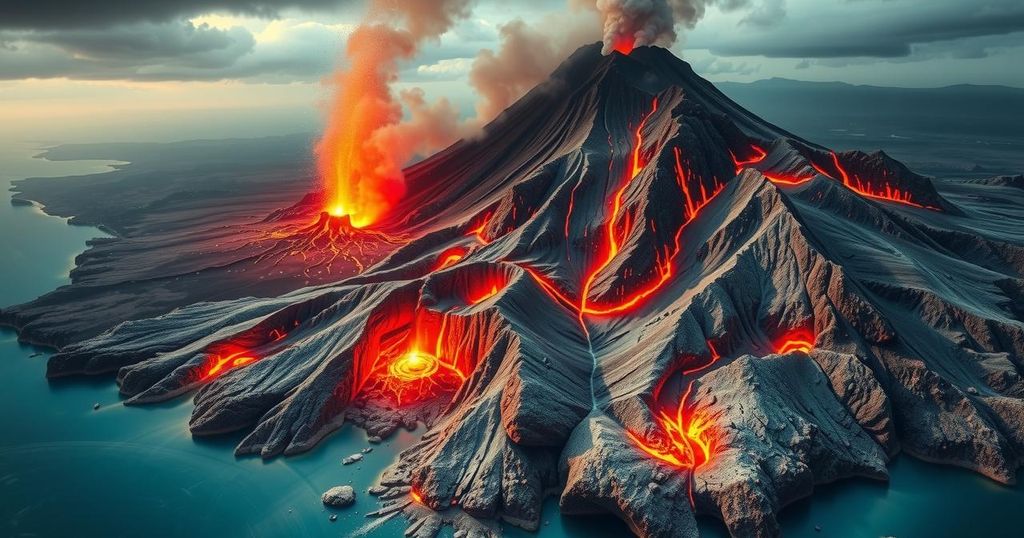Geological Turmoil: Earthquakes and Volcanic Eruptions Reshape Ethiopian Communities
Ethiopia’s Gabi Rasu area has experienced significant geological activity, including a powerful earthquake recorded at 56 kilometers south-southeast of Abomsa, and subsequent volcanic eruptions. Authorities are taking preventive measures to ensure the safety of displaced residents as severe damages to homes and infrastructure have been reported in nearby communities, prompting an urgent need for disaster response.
Recent geological activity in Ethiopia’s Gabi Rasu area has garnered significant attention, as a string of earthquakes culminated in one of the most powerful tremors recorded to date. Occurring 56 kilometers south-southeast of Abomsa, this earthquake followed a magnitude 5.5 incident near Awash, which struck at a depth of 10 kilometers. Abdulla Ali, a senior administrator in Gabi Rasu, reported that authorities are actively putting preventive measures into effect for the safety of residents, particularly those who have been temporarily relocated due to infrastructural damage.
The volcanic eruption in the region has been preceded by a series of intensified earthquakes, leading to substantial destruction in the local communities of Segento Kebele and Dulecha district. The Kessem dam and the Kessem sugar factory have been directly affected, with significant damages reported at schools, including the Ungaytu school in Sabure Kebele. Accounts from residents indicate worsening conditions, characterized by cracked roads and water intrusion from ground fissures.
Furthermore, the Addis Standard news agency has highlighted that the recurrent seismic activity in Awash Fentale has resulted in more than 30 home collapses, compelling thousands of residents to evacuate to adjacent areas. This scenario underscores the urgent need for robust disaster response and preparedness measures to safeguard the local population and infrastructure.
Ethiopia is known for its geological instability due to its location along tectonic plate boundaries, making it susceptible to earthquakes and volcanic eruptions. The recent seismic events in the Gabi Rasu area are part of a broader trend of increasing geological activity within the country, which poses threats to the safety and well-being of its inhabitants. As such events become more frequent and intense, the historical and socio-economic implications for affected communities necessitate urgent attention from local authorities and humanitarian organizations.
In summary, the recent volcanic eruptions and earthquakes in the Gabi Rasu area of Ethiopia have highlighted the ongoing geological vulnerabilities faced by the region. The response from local authorities, including preventive measures to protect residents, is critical in light of the significant damage sustained to infrastructure and homes. As thousands of individuals have been displaced, it is imperative for greater emphasis on disaster preparedness and community resilience to mitigate future risks.
Original Source: www.plenglish.com




Post Comment